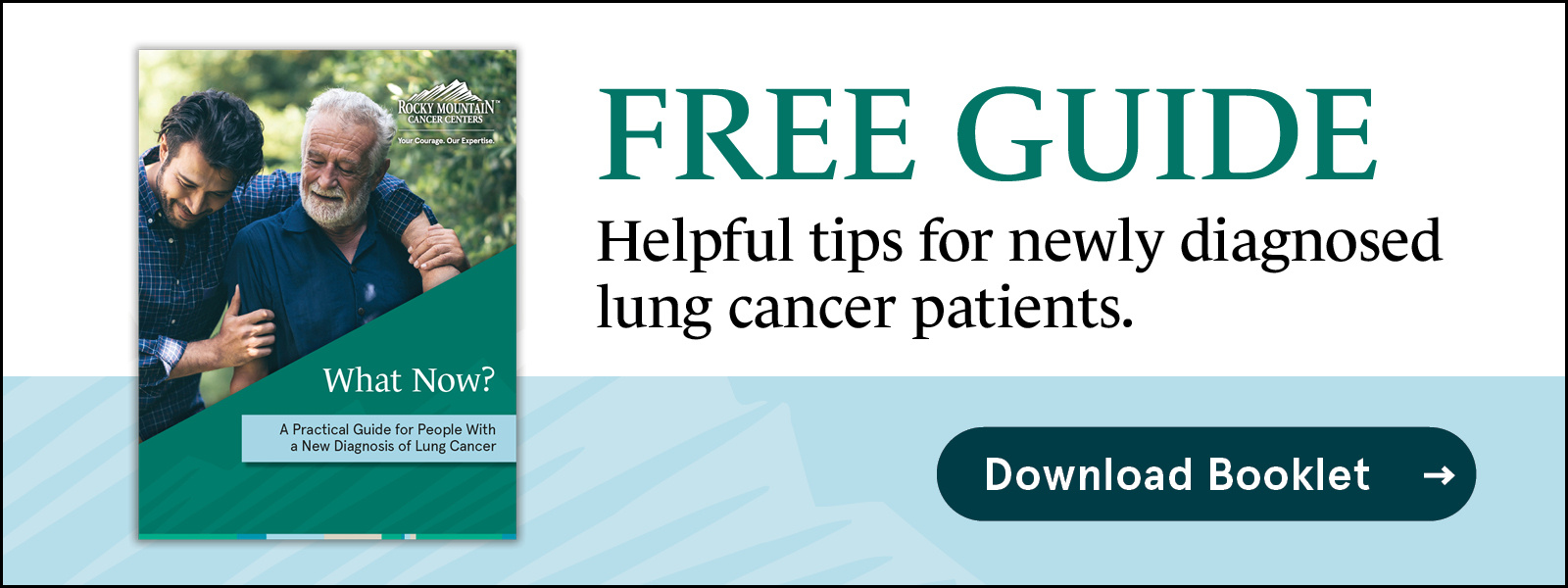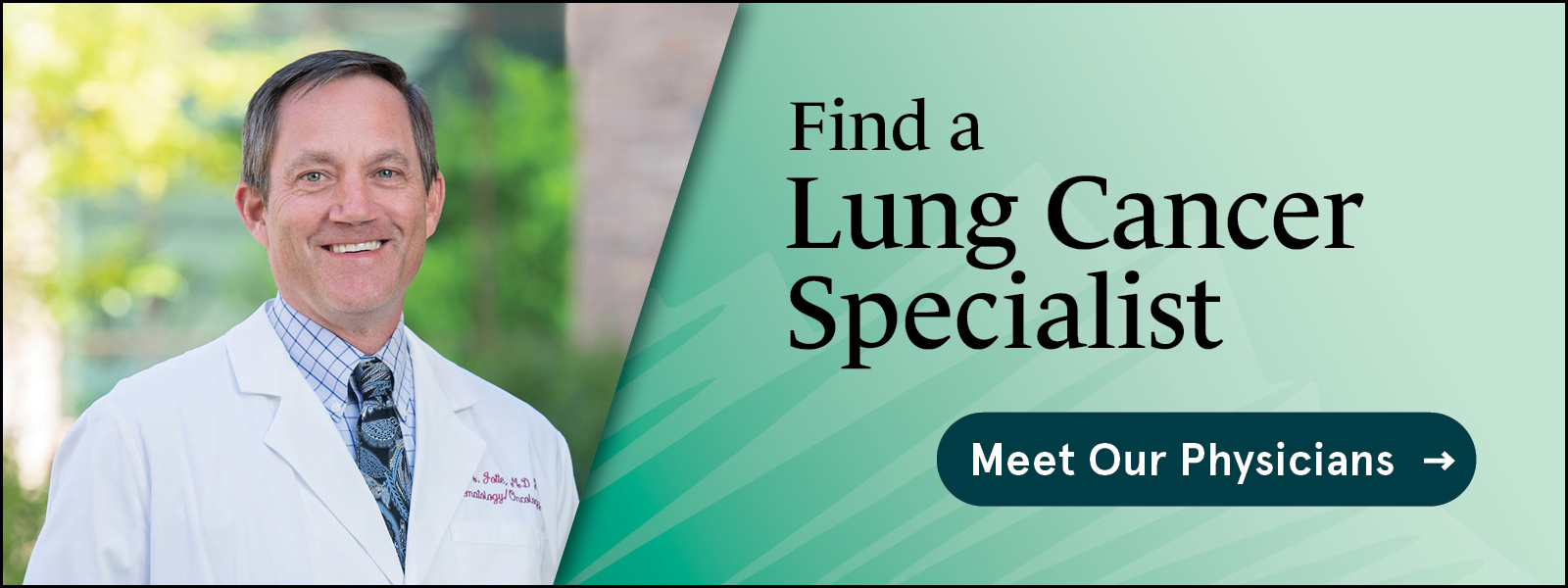16 Unexpected Lung Cancer Symptoms You Should Know About
7 min read

Lung cancer doesn't always show obvious signs or symptoms until it's become more advanced. A cough that won't go away or shortness of breath without another cause are some of the more common symptoms you hear about. But, did you know there are several other surprising signs and symptoms that can indicate lung cancer?
What Causes Lung Cancer and Who Can Get It?
It's probably no surprise that smoking is one of the main causes of lung cancer.
- Smoking causes 80% of the lung cancer deaths in women and 90% in men.
- Men that smoke are 23 times more likely to get lung cancer.
- Female smokers are 13 times more prone to develop lung cancer.
📖 Related Read: The Leading Cause of Lung Cancer Deaths? Yes, It’s Smoking
But non-smokers get lung cancer too — risk factors include extensive exposure to radon gas and worked-related exposure to carcinogens such as fumes. Non-smokers who are exposed to second-hand smoke have a 20-30% greater risk for developing lung cancer.
Lung cancer is most common in people over 65. However, younger adults can and do develop lung cancer, but less than 2% of patients are below 35. Learn more about the risk factors for developing lung cancer.
Common Symptoms of Lung Cancer
There are several lung-related symptoms of lung cancer that appear after the cancer has been growing for some time, including:
- Coughing. Coughing that doesn’t go away or gets worse and is not related to a viral or bacterial infection affecting your lungs.
- Shortness of breath. Feeling out of breath, tightness in the chest, feeling like you can’t breathe, or feeling you can’t get enough air. There are non-cancerous conditions that can also cause this symptom. Either way you should have a doctor check your lungs.
- Coughing up bloody mucus. Coughing up blood-tinged or rust-colored phlegm or mucus.
- Chest pain. Pain that gets worse with laughing, coughing, or deep breathing.
- Wheezing. Wheezing is that high-pitched whistling sound that happens when exhaling.
- Lung infections that won't clear. Repeated infections such as pneumonia or bronchitis, or a lung infection that won't go away will likely be evaluated further by your doctor for another cause.
- Hoarseness. If your voice becomes hoarse for no apparent reason you should have this evaluated by a doctor.
📖 Related Read: What are the Symptoms of Lung Cancer?
Unexpected Signs and Symptoms of Lung Cancer
What may be surprising is the number of unexpected signs of lung cancer. These signs and symptoms don’t appear to be related to the lungs so you typically wouldn't connect them to a possible lung cancer diagnosis. Many of these symptoms are associated with more advanced or recurrent lung cancer.
- Arm/shoulder pain. One kind of lung cancer (called a Pancoast tumor) develops in the lung’s upper part. Instead of affecting the lungs, these tumors may spread to the ribs, the vertebrae of your spine, or the nerves or blood vessels. These tumors cause pain in your shoulder blade, upper back, or arms. They might cause numbness or tingling in your hands too.
- Eye problems. The Pancoast tumors that cause arm/shoulder pain can also cause eye problems. Patients may realize that the pupil of one eye is smaller, that eyelid droops, and less perspiration on that side of your face. This “set” of eye symptoms is called Horner Syndrome and is a sign of lung cancer.
- Balance problems. Feeling unsteady or losing your balance can be a result of lung cancer. A tumor may be located near the superior vena cava (SVC), a large vein that takes blood from your head and arms back to the heart. As the tumor grows, it can cause the blood to back up in this vein and cause dizziness or balance loss. Anemia, common in lung cancer, can cause balance problems too.
- Headaches. Headaches can be caused by a tumor near the superior vena cava (the large vein that transports blood from the head and arms back to the heart). Backed up blood in this vein can make your head pound or even pass out. High blood calcium levels, seen in up to 20% of lung cancers, also causes headaches.
- Swelling of the neck, arms or upper chest. Sometimes accompanied by a bluish-red tint in the skin this is called Superior Vena Cava Syndrome. Tumors in the area of the superior vena cava vein area can press it and the nearby lymph nodes. This can cause the blood to back up in the veins which makes you appear to be swollen in that area of the body.
- Weight Gain or Loss. Patients with lung cancer can gain or lose weight. The tumors of small-cell lung cancer sometimes cause the body to make a hormone called ACTH. ACTH, in turn, causes the body to make cortisol. Too much cortisol causes fluid retention and weight gain. Other patients, however, lose weight — usually caused by the higher calcium levels that cause loss of appetite.
- Blood clots. People with lung cancer are more likely to develop blood clots in the legs, arms, or lungs. Researchers believe that cancer increases inflammation in the body. The inflammation, in turn, causes blood clots.
- Bone pain. Some people have bone pain or feel weak and achy. Sometimes, it’s difficult to tell the difference between bone and muscle pain. If your pain gets worse when moving, at night, or when lying on your back, it’s probably bone pain. Lung cancer can spread to the bones, causing bone pain in the spine/back, pelvis, or large bones of the arms and legs.
- Clubbed fingers – fatter fingers. The ends of the fingers appear “fatter.” The skin next to the fingernail may look shiny. The fingernail begins to curve downward like a spoon. An astonishing 80% of people with clubbed fingers have lung cancer.
- Digestive problems. Between 10-20% of people with lung cancer get high levels of calcium in their blood, a condition called hypercalcemia. Too much calcium in the blood may cause digestive problems, like tummy aches, constipation, or nausea.
- Extreme thirst and frequent urination. The higher levels of calcium in your blood (hypercalcemia) that cause digestive problems may also cause extreme thirst and frequent urination.
- Fatigue or feeling tired. Because lung cancer causes the lungs to not function as well, patients can become anemic. Cancer feeds off the body’s nutrients, robbing the body of energy to get through everyday chores. This symptom alone is not necessarily a sign of lung cancer, but be sure to tell your doctor if you're feeling excessively tired so they can assess that symptom along with any others you tell them about.
- Heart problems. High calcium levels and anemia can cause heart problems — usually either a rapid heartbeat or irregular heartbeat. High calcium levels can cause extremely serious heart problems, including a heart attack or going into a coma. Severely anemic patients may experience chest pain and shortness of breath.
- Quitting smoking is suddenly easy. Some people who are suddenly able to stop smoking may already have lung cancer. Experts believe this is because the cancerous cells in the lungs may interfere with nicotine addiction.
- Swollen breasts in men. A less common kind of lung cancer, called large-cell, may interfere with a man’s hormone levels, causing swelling and tenderness in a man’s breasts.
- Anxiety, depression, or dementia. Experts aren’t sure why, but people with lung cancer are more likely to experience mental health issues that require treatment. Mental health issues combined with other symptoms are concerning.
While none of these signs and symptoms definitely mean lung cancer, having several of these symptoms is concerning. It’s time to schedule a checkup with your primary care physician to discuss your symptoms.
Lung Cancer Screening is Available to Some
The earlier lung cancer is found, the easier it is to treat. Ideally lung cancer would be diagnosed before any of these symptoms appear. If you have a history of smoking you may be eligible for a lung cancer screening test. Learn more about lung cancer screening where you can also download our infographic as a guide to lung cancer risk factors and symptoms. Or, watch this short video about who is eligible for lung cancer screening. Screening should be discussed and scheduled with your primary care physician or pulmonologist.
What's Next if You Receive a Lung Cancer Diagnosis?
If the symptoms you noticed and reported to your doctor were caused by lung cancer, you're likely to visit with an oncologist who specializes in lung cancer treatments. They will determine the type of lung cancer, stage, and other factors that allows them to create a personalized treatment plan. If you're in the Colorado Front Range, the Rocky Mountain Cancer Centers team is here to guide you through the process every step of the way.


